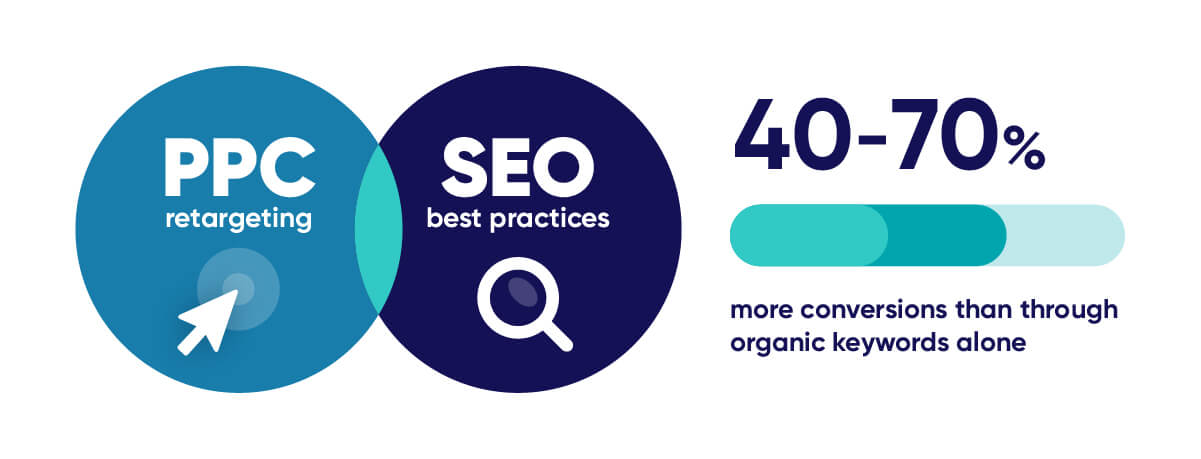These days, the digital environment is more saturated with advertising messages and banner ads than ever before. So much so that web users have learned how to tune them out. In fact, studies now suggest that users subconsciously direct their attention only to the select subset of stimuli on a search results page that are directly related to their goals—while all the rest falls to the background.
Despite this revelation, search remains a critical starting point for your user journey. More than 3.5 billion Google search terms are conducted every single day—each search connecting users to the answers and insights they need to identify the right product, find the contact information for a particular government agency, or research health symptoms. For organizations who haven’t explored how and why users arrive at their website, it’s time for a UX strategy upgrade.
In order to seamlessly fit into the modern web user’s digital habits, organizations need to consider how organic search plays a pivotal role in seamlessly guiding users to owned web properties. To get started, here are three simple steps you can take to align your search and web strategies to optimize the user experience from start to finish—and search to conversion.
1. Setting up a strong search framework with SEO
To enhance your SEO, align it with your UX by focusing on your keywords. These unique terms and phrases are used by your users to find answers to their queries.
Keyword research tools can help you better understand which terms web users are using and point them in the right direction. Building these keywords into your relevant existing web and landing pages is one of the most important ways to begin improving page position on the search results pages that matter most to your organization.
You should also remember that search engines are trying to understand your pages the way users would and that means serving the most informative content and the best user experience up first. Therefore, poor UX will harm your search performance.
Support your page performance by:
- Avoiding intrusive interstitials and pop-ups to force conversions
- Monitoring dead-ends and broken links to make sure that bots and users can make their way through your site via a clear navigation and good internal linking
- Focusing on designing an optimal user journey starting from your landing page, with the search intent in mind
- Creating internal links to related articles allowing search engines bots to crawl and index your pages more effectively
Finally, don’t forget content. Keeping tabs on the pages users interact with most on your website can also help identify topics, content, and keywords that users are seeking out most often. Additional SEO boosters include earning trustworthy backlinks from reputable third-party web sources and meeting many of Google’s other ranking criteria—including fast page load times, accessibility features, and accurate metadata.
2. Supporting SEO with targeted PPC campaigns
When used in tandem with strong SEO strategies, Pay Per Click (PPC) campaigns can offer a powerful way to bolster your search presence to find and engage highly targeted user groups. By setting the right parameters—including retargeting, customer match, lookalike audiences, and keyword-driven campaigns—PPC can avoid the fate of many digital ad campaigns and actually improve engagement rates.
According to a variety of studies evaluating retargeting efforts, pairing PPC retargeting with SEO best practices can help drive 40-70% more conversions than through organic keywords alone.

Use PPC and SEO in tandem to improve your search presence:
- For keywords that are too competitive to reach the top three organically, invest in PPC and for long tail keywords that require evergreen informative articles, then target them with SEO optimized landing pages
- Align your search strategy with the search intent behind each keyword you want to target: Keywords with high conversion intent should be targeted with PPC or PPC+SEO and keywords searched by users who are not yet in the decision phase should be targeted with SEO
- Use your PPC campaigns to harvest keywords that could be relevant for SEO and control your PPC budget by stopping to invest on keywords where you rank first organically. PPC can also help testing Meta description and Meta titles on keywords before you design your landing pages for SEO
Finally, remember that in some cases, PPC and SEO traffic have slightly different search intent for the same keyword. PPC traffic, for example, is very much a one-stop to conversion. Creating separate no-index PPC landing pages can be beneficial in order to create a different UX for your PPC traffic without harming your SEO performance.
3. Building out content and user journeys to facilitate a seamless handoff
So, your SEO and PPC campaigns are now driving relevant traffic to your website. Congrats, that’s a vital first step! But optimizing UX can’t stop there. Now, it’s time to think about how you can support the handoff from search engines to your website.
Questions to ask yourself at this stage:
- Where do our users want to go next?
- What are our users’ end goals?
- How do these end goals vary by product or service category?
- And finally, where is our current web presence falling short of these expectations?
In order to answer these questions, you’ll need to take another look under the hood. Beyond the SEO research now baked into each one of your web pages, you should consider the journey expectations of users once they land on your website.
Understanding and facilitating these motivations requires two strategies. First, it necessitates the right content to keep users moving. This means updating old content and drafting new content that creates a logical flow of pages to the final conversion. Second, it requires careful monitoring for potential UX and accessibility issues that might be hiding in your current web design.
Even when content is engaging and informative, an inability to find the next call to action (CTA) or web pages that do not render correctly on mobile devices can lead to premature abandonment. And many users who abandon your website won’t return. A quick glance at behavior analytics tools can help pinpoint where these issues exist, so your web team can eliminate them and send users on their way.
When your organization prioritizes greater visibility to user intent and user behavior, it becomes much easier to build simple, seamless page flows that help them reach the end of their user journey faster—and with less friction—than ever.


